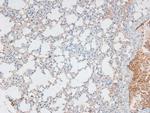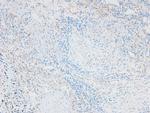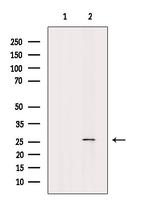Search Thermo Fisher Scientific
FIGURE: 1 / 3
Phospho-Caveolin 2 (Ser23) Antibody (PA5-118635) in IHC (P)



Product Details
PA5-118635
Species Reactivity
Host/Isotype
Class
Type
Immunogen
Conjugate
Form
Concentration
Purification
Storage buffer
Contains
Storage conditions
Shipping conditions
RRID
Product Specific Information
Antibody detects endogenous levels of Caveolin 2 only when phosphorylated at Ser23.
Target Information
Caveolae are specialized domains of the plasma membrane that are implicated in the sequestration of a variety of lipid and protein molecules. It has been suggested that these important cellular organelles have a pivotal role in such diverse biochemical processes as lipid metabolism, growth regulation, signal transduction, and apoptosis. Caveolin interacts with and regulates heterotrimeric G-proteins. Currently, there are three members of the caveolin multigene family which are known to encode 21-24 kDa integral membrane proteins that comprise the major structural component of the caveolar membrane in vivo. Caveolin-2 protein is abundantly expressed in fibroblasts and differentiated adipocytes, smooth and skeletal muscle, and endothelial cells. The expression of caveolin-1 is similar to that of caveolin-2 while caveolin-3 expression appears to be limited to muscle tissue types.
For Research Use Only. Not for use in diagnostic procedures. Not for resale without express authorization.
References (0)
Bioinformatics
Protein Aliases: caveolae; caveolae protein, 20-kD; caveolin 2 isoform a and b; Caveolin-2; MGC12294; Phospho-CAV2
Gene Aliases: AI447843; CAV; CAV2
UniProt ID: (Human) P51636, (Mouse) Q9WVC3, (Rat) Q2IBC5
Entrez Gene ID: (Human) 858, (Mouse) 12390, (Rat) 363425

Performance Guarantee
If an Invitrogen™ antibody doesn't perform as described on our website or datasheet,we'll replace the product at no cost to you, or provide you with a credit for a future purchase.*
Learn more
We're here to help
Get expert recommendations for common problems or connect directly with an on staff expert for technical assistance related to applications, equipment and general product use.
Contact tech support
